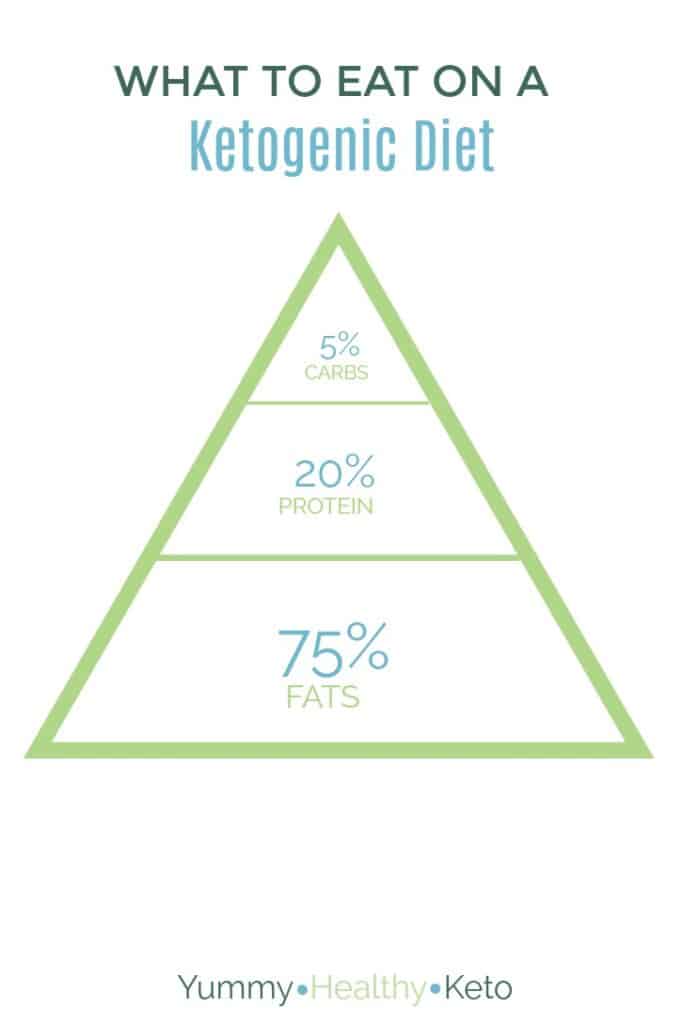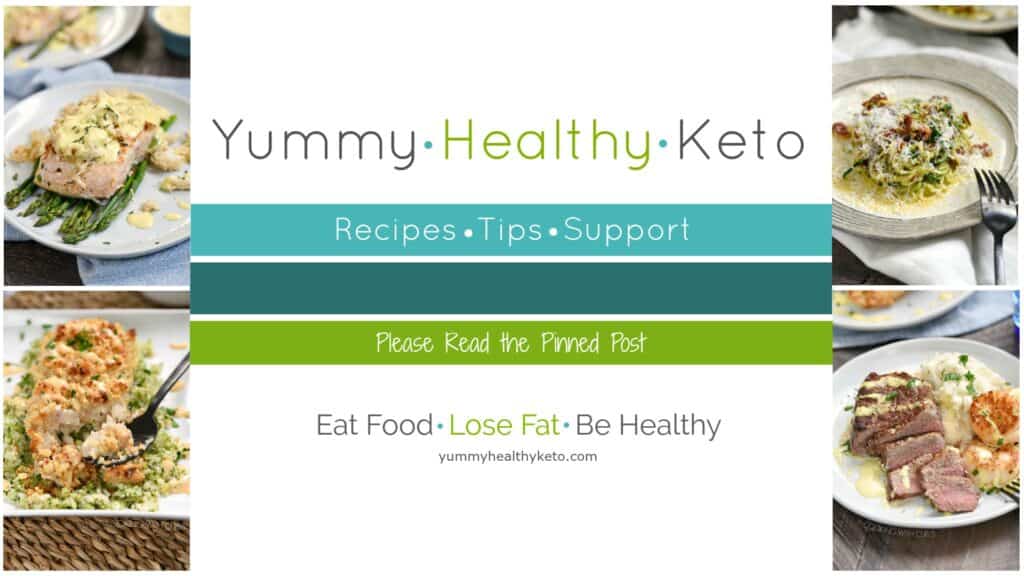Keto Quick Start Guide
This post may contain affiliate links. As an Amazon Associate I earn from qualifying purchases. For more information, please visit my disclosure page.
I’m sure you have been hearing about the “Keto Diet” non-stop over the past few years. Everyone has either tried it or has a friend or family member that has lost weight on it and now you are curious. Is it right for me? Let’s start with the basics in this Keto Quick Start Guide for Beginners.

What is the Keto Diet?
A ketogenic diet (keto) is a low-carb, moderate-protein, high-fat style of eating that forces your body to get most of it’s energy from fat instead of carbohydrates (glucose) via ketones. Ketones are produced by the liver using stored fat.
How does the Keto Diet Work?
When the body uses the stored fat, that has been processed through the liver, it is called ketosis. Being in ketosis quite literally turns your body into a fat-burning machine!

When you eat a high-carb diet, your body is fueled by carbohydrates which are broken down into glucose. The glucose is stored in the body until it is needed as fuel. If there is no glucose available, your body starts breaking down fat into energy. Low-carb equals low-glucose which means your body must burn the stored fat for energy!
Being in ketosis can also lead to many health benefits such as fat loss, improved focus, increased energy, decreased inflammation, better sleep, clear skin, reduced appetite, better digestion, a balanced mood and strength gain.
How do you get into Ketosis?
Getting your body into ketosis is a process that can take several days, or even a few weeks. It is not instantaneous and there is no magic pill to get your there faster. It comes down to what you eat and how much you eat of each macronutrient, aka “macros”.
There are three types of macronutrients in the human diet; fats, proteins and carbohydrates. On a ketogenic diet, your daily breakdown should look something like this:

Yes, 75% of what you eat each day will come from fat. Eating fat keeps you feeling fuller longer, prevents cravings, and is necessary for you to get your body into ketosis.
What do you eat on the Keto Diet?
A keto diet includes quality protein, nonstarchy vegetables, healthy fats, and sugar-free beverages. Berries and full-fat dairy can also be consumed in moderation.
The easiest way for me to make this list printable, is to put the information into a recipe card. This list will print out on 3 pages.

What do you Eat on the Keto Diet?
Ingredients
Quality Protein
- Eggs
- Beef ground, tenderloin, filet, flank, rib-eye, skirt
- Chicken ground, whole, thighs, quarters
- Seafood salmon, sardines, shrimp, scallops, sea bass, tuna, trout
- Pork bacon, chops, ground, sausage, tenderloin
- Turkey ground, whole/sliced, thighs, quarters.
- Lamb ground, leg, whole
- Duck
- Organ Meats collagen powder, liver, tripe
Nonstarchy Vegetables
- Artichokes
- Asparagus
- Bok Choy
- Broccoli
- Brussels Sprouts
- Cabbage
- Cauliflower
- Celery
- Chard
- Chives
- Cucumber
- Eggplant
- Endive
- Fennel
- Garlic
- Green Beans
- Kale
- Leeks
- Lettuce
- Mushrooms
- Okra
- Onions
- Peppers
- Radicchio
- Radishes
- Rhubarb
- Spinach
- Sprouts
- Tomatoes
- Water Chestnuts
- Zucchini
Healthy Fats
- Animal Fats butter, ghee, lard, tallow, egg yolks
- Quality Oils avocado oil, coconut oil, extra-virgin olive oil, macadamia oil, MCT oil
- Nut Butters almond, cocoa butter, coconut butter
- Other avocado, full-fat coconut milk, mayonnaise, olives
- Nuts almonds, macadamia nuts, pecans, walnuts, hazelnuts, cashews, pistachios
Beverages
- Bone Broth
- Coffee unsweetened
- Nut Milks unsweetened
- Seltzer/Sparkling Water unflavored/unsweetened
- Tea unsweetened
- Water
Herbs & Spices
- Black Pepper
- Dried Herbs and Spices no sugar added
- Fresh Herbs basil, cilantro, mint, parsley, rosemary, thyme
- Himalayan Pink Salt
- Mustard no sugar added
- Vinegar apple cider, balsamic, red wine
Baking
- Almond Flour
- Cacao Nibs
- Coconut Flour
- Unsweetened Cacao Powder
- 100 % Dark Chocolate
Sweeteners
- Erythritol pure or combined with other sweeteners
- Monkfruit pure or combined with erythritol such as Lakanto products
- Stevia liquid or powdered
- Swerve combination of erythritol and oligosaccharides
Fruits – In Moderation
- Lemon/Lime
- Blackberries
- Blueberries
- Raspberries
- Strawberries
Dairy – In Moderation
- Full-fat Cheese
- Greek Yogurt – full-fat plain
- Heavy Cream
- Dairy can be consumed as long as it does not cause inflammation or adverse reactions. If you are having trouble loosing weight or hit a plateau reduce or eliminate dairy from your diet.
Foods to Avoid
- All Grains & Starches barley, beans, bread, corn, cereal, rice, wheat, quinoa
- Artificial Sweeteners Equal/Sucralose, Sweet’n Low
- Beer ciders, and sweet wines/liqueurs
- Energy Drinks
- Factory Farmed Meat Poultry and Seafood
- Fruit-based Smoothies
- Fruit Juice
- Margarine
- Most Fruits apples, bananas, mangoes, oranges, papaya, pineapples, etc
- Processed Food foods labeled diet low fat or keto*
- Refined Oils – canola, corn, grapeseed, soybean, vegetable
- Soda/Diet Soda
- Starchy Vegetables butternut squash, potatoes, plantains, sweet potatoes
- Sugars agave nectar, brown, coconut sugar, corn syrup, dextrose, evaporated cane juice, granulated white sugar, high-fructose corn syrup, honey,maltodextrin, maple syrup, powdered sugar.
Notes
Is a Ketogenic Diet Right for Me?
Maybe, maybe not. You need to look at the keto diet as a lifestyle, not a quick fix. It will completely change the way you look at and think about food, in a good way if you let it.
What are your goals?
Are you looking to lose weight? Yes, keto could be perfect for you – but it will take time for your body to adjust, so you need to be in it for the long haul. If you need to lose 65 pounds by your high school reunion in 4 weeks, you will probably be disappointed.
Are you looking to heal your gut and your body? Yes, keto could be perfect for you. If you fully embrace the process, and consume wholesome, high-quality foods you will definitely feel and look better inside and out.
I think the key here is that You have to want it! You have to be all in, your head included. Once you accept that this lifestyle is the best thing for you and your body, you have to clear your mind of all the sabotaging demons. There will be good days, bad days, and some utterly frustrating days that come your way, but you have to look toward your end goal and keep going!
How to Start a Keto Diet
Step #1 – Clear your mind and your schedule.
Do not attempt to start this new lifestyle if you have a cruise or family reunion planned within the next two weeks. The first couple of weeks are the hardest as your body adjusts, you don’t want to be tempted before you really get started – that would be silly!
Step # 2 – Clean out your kitchen.
Remove all non-keto compliant foods from your pantry, refrigerator, freezer, desk drawer, anywhere they may be hiding. You do not want to be tempted at 3 am by the cookies that are calling your name from the cupboard. Get rid of them!!
Donate canned and non-perishable food items to your local food bank or church.
Step #3 – Restock your kitchen.
Go to the grocery store and pick up all of the healthy items that you need to start your new lifestyle.
Stick with the basics for the first few weeks; fatty cuts of meat, salmon, homemade cream or butter based sauces, lots of leafy greens, eggs, bacon, broccoli, cauliflower (riced/ mashed), coffee and half your body weight in water everyday. If you weight 200 pounds, you need to consume 100 ounces of water every-single-day!
What is Keto Flu?
Keto Flu is your body’s way of adjusting to more fats and less carbs, it doesn’t like it! Your body has become accustomed to non-stop glucose for fuel and acts like a spoiled two year old when you decide to remove those carbs and detox your body.
You will likely experience what feels like the flu within the first 7 to 9 days of starting your new diet. Dizziness, tiredness, mood-swings, killer headache are all potential symptoms that you will feel – but don’t give in! Forget about macros at this point and concentrate on eating fat and protein to help your body adjust. Adding more carbs will just prolong the process, now is the time to really limit them.
Drink more water!! Add Himalayan Sea Salt to everything! Drink 1 to 2 cups of bone broth daily. You are excreting massive amounts of water and sodium out of your body so you need to replenish just as quickly.
The good news is that this misery only lasts for a couple of days and then you will feel much, much better.
What if I have Food Allergies?
Food allergies can usually be worked around, you just have to be extra careful when reading labels. I am severally allergic to coconut and avocado, the two main ingredients in a keto diet, but I still manage to make it work. I use unsalted butter instead of coconut oil, olive oil instead of avocado oil, and only use avocado as a prop in recipe photos.
Most of the recipes on this site will be lactose-free because I am lactose-intolerant. I will always explain my substitutions and let you know where I found the products that I use.
For tips, support and recipe ideas join the Yummy Healthy Keto Facebook Page!

The images above are recipes located on our sister site, Cooking with Curls.
- Salmon Oscar in the upper left hand corner
- Macadamia Nut Crusted Mahi-Mahi in the lower left corner
- Zucchini Carbonara in the upper right hand corner
- Steak and Scallops with Lime-Dill Hollandaise in the bottom right corner
Disclaimer – I am not a doctor, dietitian, or nurse. The information provided on Yummy Healthy Keto is based on my observations and results living a ketogenic lifestyle. Always consult with your personal physician before starting any diet. This Keto Quick Start Guide is just that, a guide to help you get started in your new ketogenic life!


